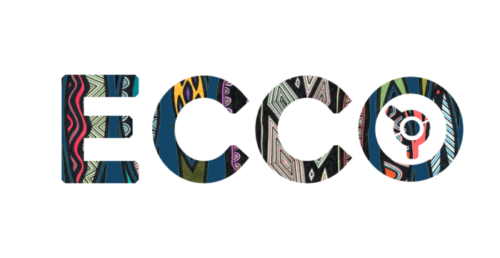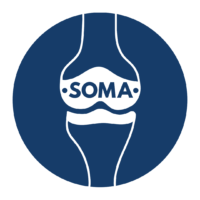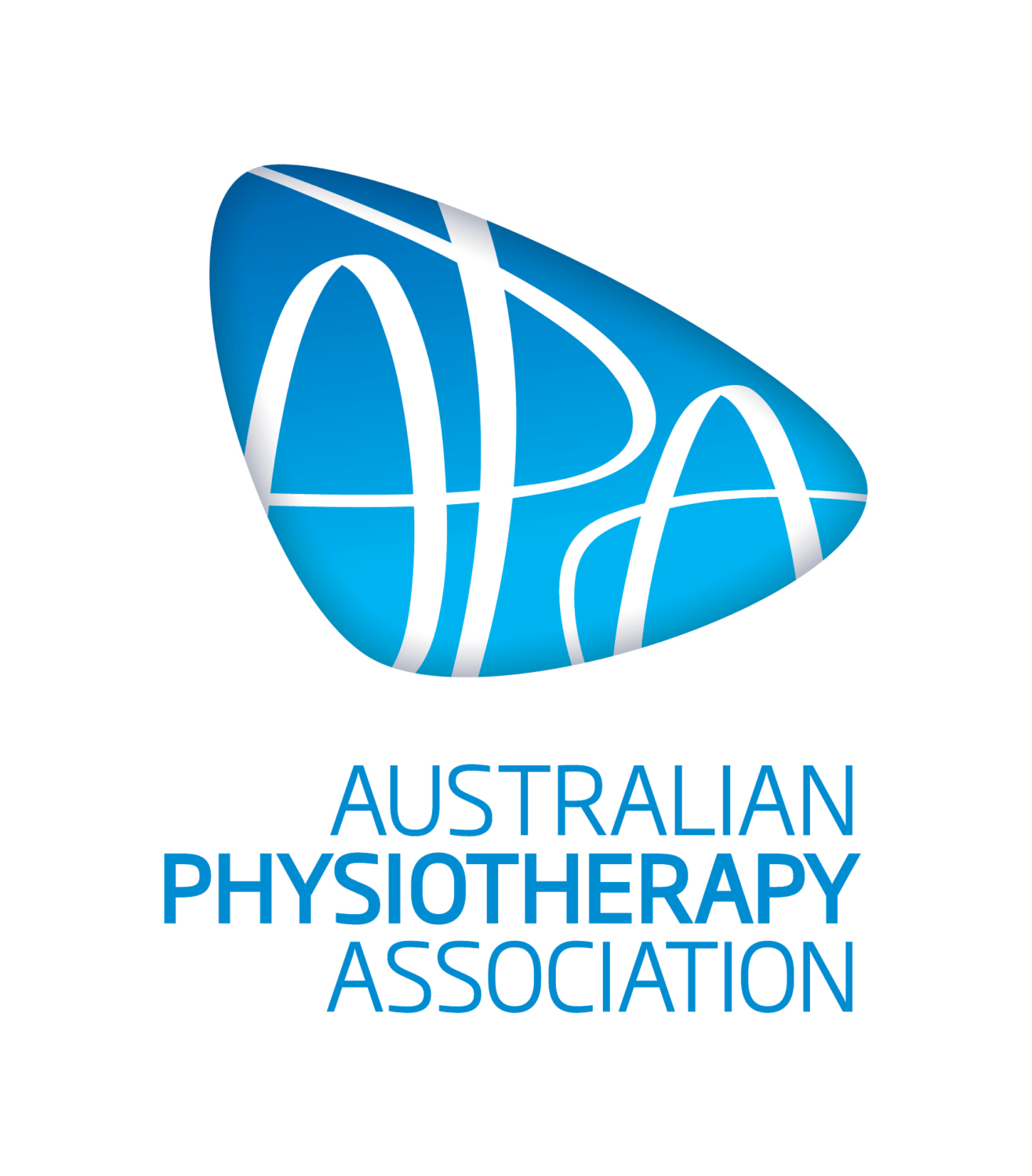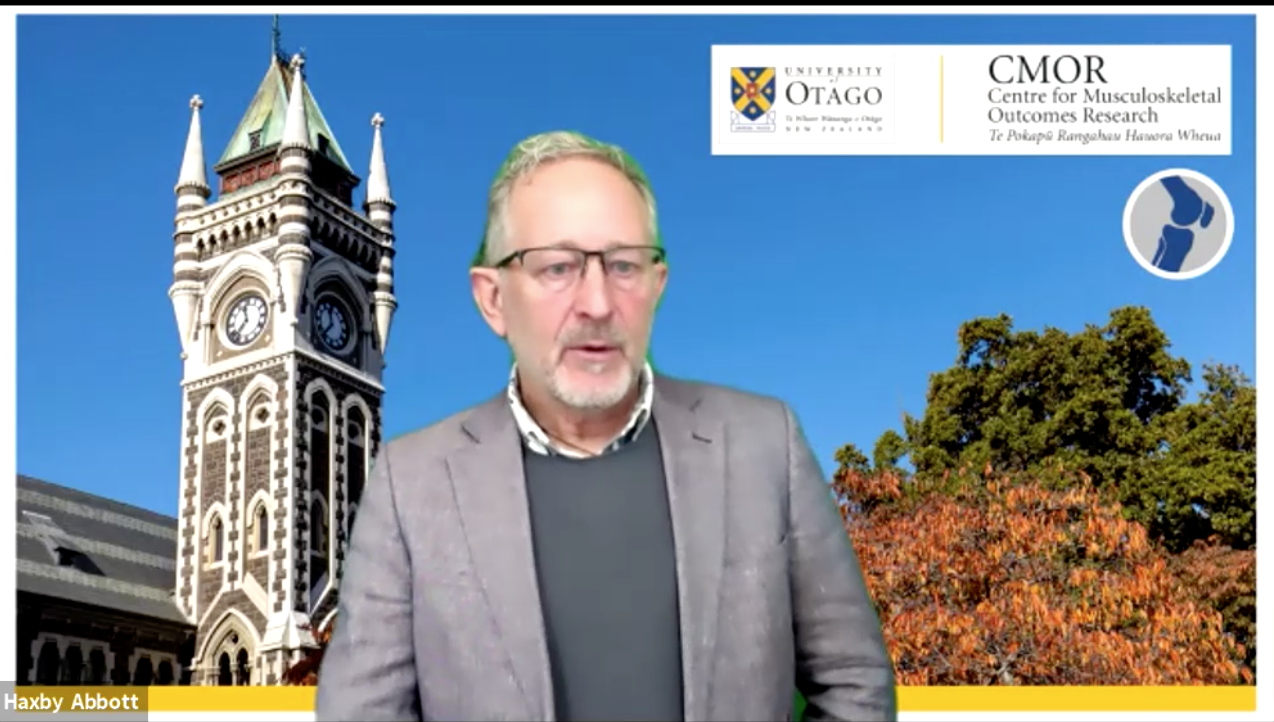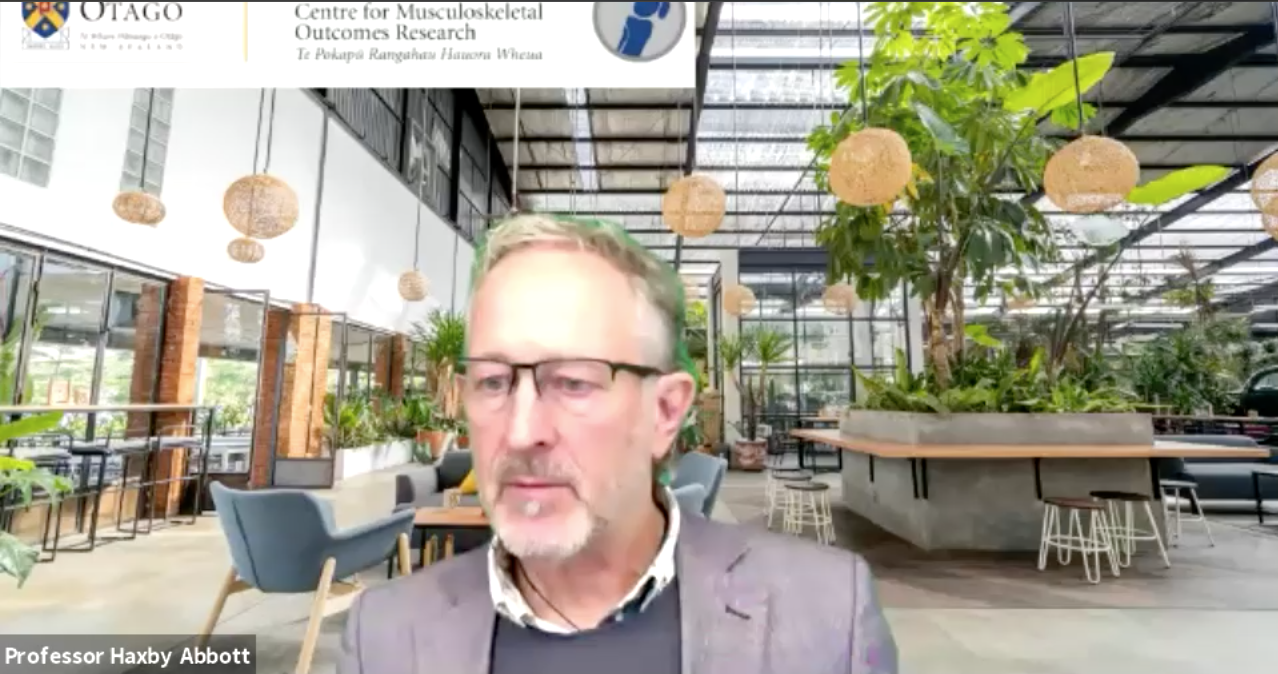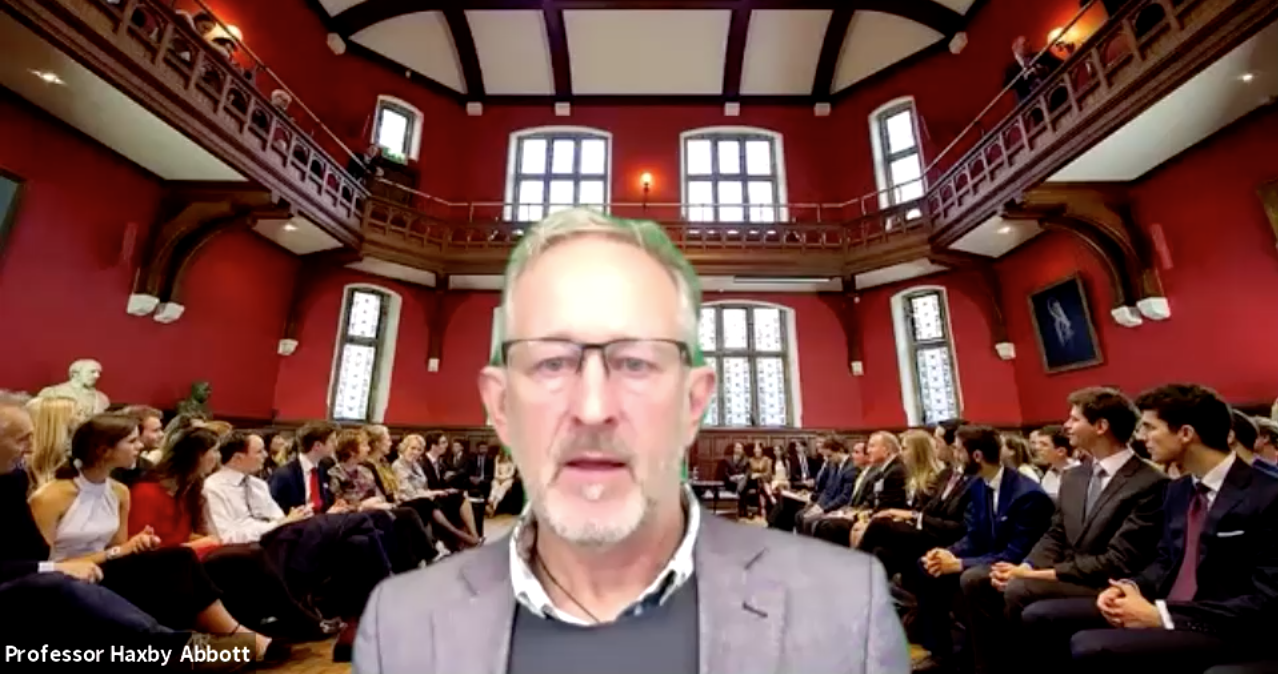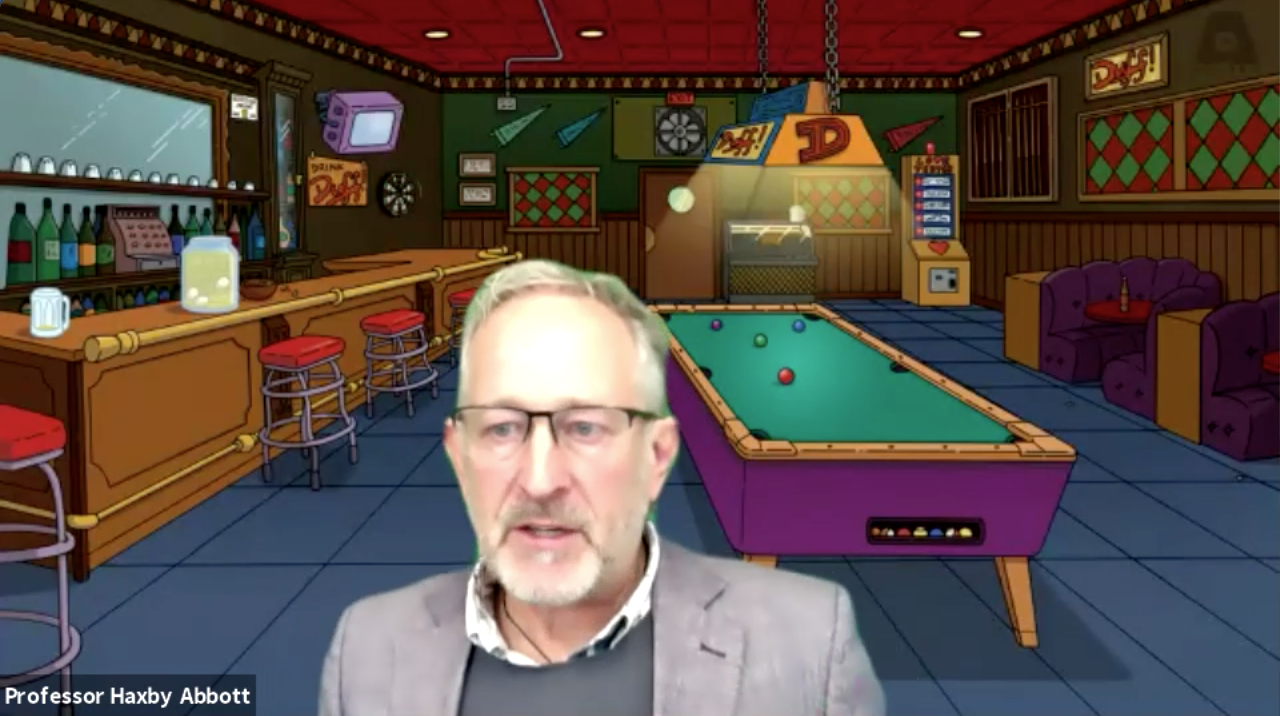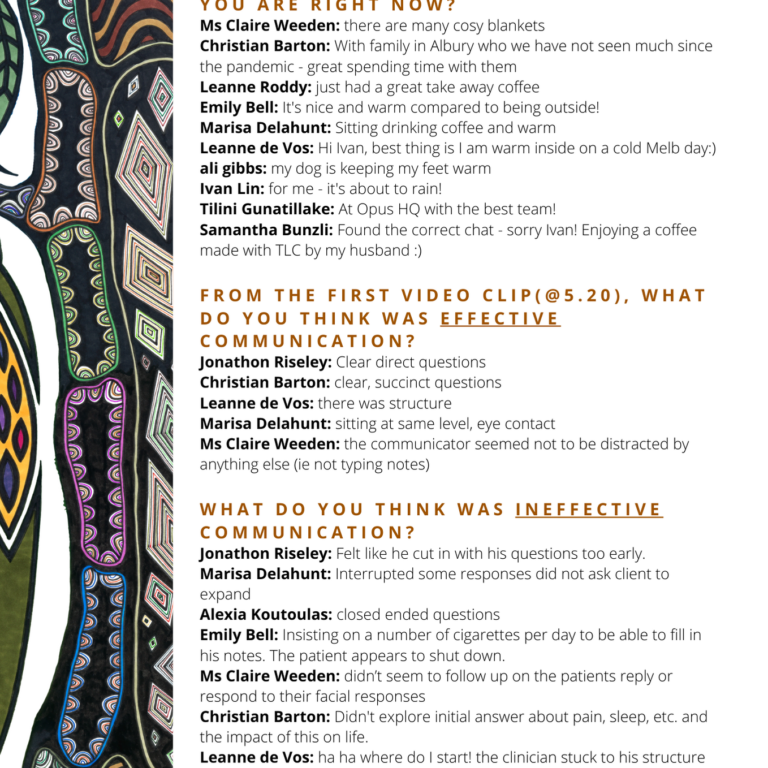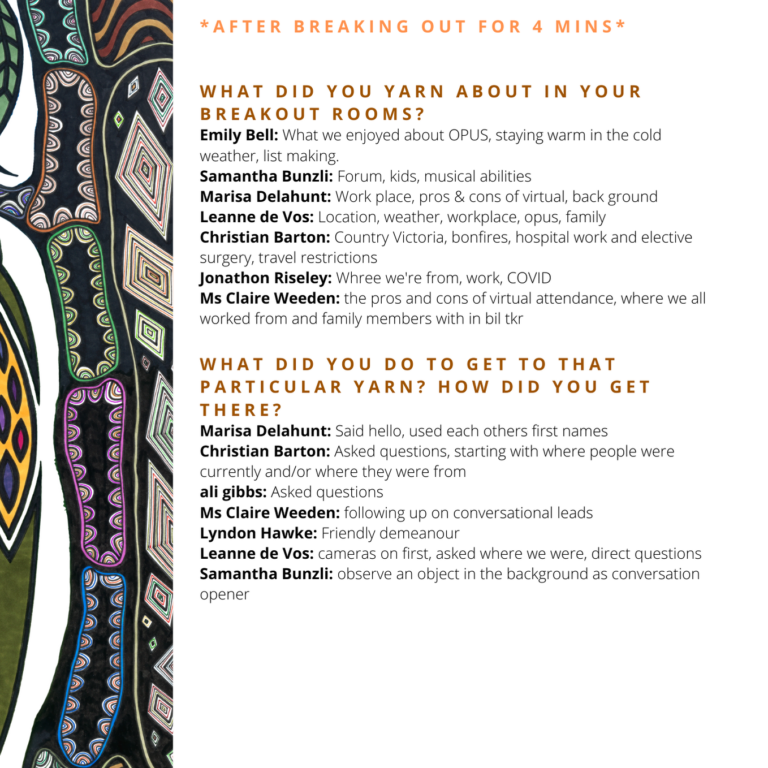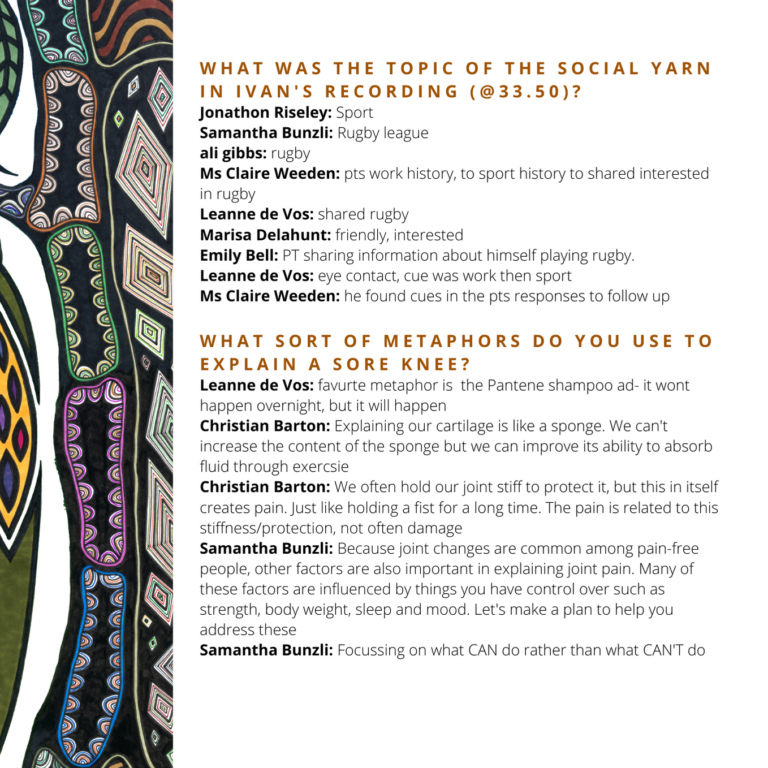post-event content
The research journey
From idea to impact
Questions from the audience:
| What a great way to start the conference! I have to say that I didn’t do any of the things that Peter suggested before starting my PhD but was lucky enough to stumble into a fantastic team. How can we make sure people know to check their team, supervisor etc. before they actually start their PhD? |
| Make sure to post your questions here, as we will be starting our panel next! |
| For Peter and Michelle, what do you think is the biggest mistake made by clinicians wanting to begin their PhD? How can we best avoid this? |
| Following on from my last question is how can we get the message across that people looking to do research should be doing their due diligence? I didn’t know until AFTER I started. |
| For Erwin, given your interest in futurism how would you approach the trolley problem in a medical context? |
| From Nigel Kour: Question for Peter related to the start-up example, during a PhD, do you have recommendations for balancing your core research work and pursuing potential impact through initiatives/start-ups? |
| For Erwin again, the rate at which computers are evolving is significantly faster than regulations. In what ways would regulation safeguards and processes need to change to ensure we keep with the latest and greatest computers? |
Q&A Discussion
session 2: Doing the research
Questions from the audience:
| For Jon and Ivan, what are some important difference between ‘building rapport’ with non-Aborignal participants and using research yarning to buld trust and relationships with Aboriginal and Torres Strait Islander participants? |
| For Darshini: How do you know where to start when analysing your transcripts? |
| As a qualitative researcher, how can we make sure that we are building the profile of qual research so that one day in the future we can experience less of the same 10 questions or push back from researchers who may be trying to understand research from a quant paradigm? |
| From Emily Bell – Thanks for the presentation Darshini, I think the slides you used with particular terminology helps us to prepare for peer review. When thinking about writing a qual or mized methods manuscript, where do you start to find a suitable journal? Particularly when thinking about the success of going through peer review |
| Why are Masters of Public Health or Health Science not eligible for any points under the CV component of AOA 21 selection? |
| For both Darsh and Ian, Ian mentioned good research habits – what are one or two top research habits for qualitative researchers and clinicans? |
| For Ian, thanks for the presentation. The first session of the day spoke about how to get the most out of a PhD. Considering that there is a significantly shorter amount of time to complete a project during the AOA program, what are some tips you could suggest for getting the most out of it? |
| Thanks for your presentation Ian. Interested to hear your thoughts on how important it is for trainees to actually do research, rather than just learning critical appraisal, evidence-based practice etc., to have a research ethos and be good evaluators/users of research. Do you think it makes a big difference? |
Q&A Discussion
session 3: Translating findings into impact
Questions from the audience:
| Emily Bell: Thanks for a great presentation Samantha, your tips will be very helpful for us getting published. How many publications do you need in order to be competitive for postdoc positions? |
| From Sid – What are the barriers that need to be lifted to increase patient participation in non-surgical management? |
| Emily Bell: Thanks for a great session Christian, what can we do as individuals to contribute to translating evidence and implementing change? |
| From Sid – What are some ways as Phd students/early career researchers, we can start to build industry connections? Where should you approach people? |
| Do academics have an obligaton for translation? |
| Thanks to all the panelists for great presentations. Question for Chris S-what is the best way you have found to reach out and connect with Industry? And what are the warning signs that the partnership might be more trouble then its worth? |
| Nigel Kour: Question for Chris, you mentioned that industry has different end goals with regards to a publication vs a business decision. Should a PhD with an interest in entering industry still primarily focus on demonstrating skills/competence]] through publications? |
Q&A Discussion
Session 1: Patient Selection for Joint Replacement Surgery
Q&A Discussion (Part 1) with Prof Erwin Loh (SVHA)
Questions from the audience:
| With ageing populations, what are the other considerations for patient selection moving forward for safe surgery? |
| How do organisations support surgeons in being able to select the right patients? (Offering alternatives, screening patients coming in) |
| Do we need to education patients so that they are aware they need to make sure they are the right patients for the surgery? |
| How do you see AI and decision making tools in the future supporting patient selection? Will the cost investment into upgrading hospital systems be offset by the potential increased cost effectiveness |
| Lovely work on the predictive model Sharm. What do you think about the utility for clinicians, and importance to patients, of any model that predicts receipt of TKR, given the current care pathway for knee OA is not be optimal, and we know that many people may be receiving TKR unnecessarily and might do just as well with non-surgical alternatives such as exercise? |
| Thanks for a great presentation Daniel. I know this is difficult, but what are the considerations when deciding on the level of model performance would be needed to move from the building to embedding into clinical setting? |
| Please explain the difference between risk and probability. |
| Iin plain Enlish “risk means liklyhood of adverse outcome |
As a medical administrator or as a clinician (different hat), do you think 30mins is enough to take a good history, assess a NEWLY referred patient, determine the diagnosis, discuss the diagnosis and treatment option, and talk about surgery risk and benefits? There is a seismic change in expectation for new older (newly retired) boomer generation compared to previous years where they think they can do more than their parents, and much dissatisfaction and disappointment can occur when they feel they are ‘denied’ access to surgery in the public system in the consumer/provider mindset. How does AI and pathway work to address this particularly when most response to the AI recommendation (if negative for surgery) is ‘my case is special’ or ‘you are treating me as a number’? |
| How can we approach changing/increasing clinical data collection to potentially improve these models before this data is shown to clearly improve predictive ability? |
Sharm, Thanks for the presentation. Do you think this model could be effective in other countries? Thinking about the culture of these people and the context in which they are involved? Yes, quite possibly. We are currently collaborating with the Department of Family Medicine at the University of Calgary in Canada, comparing our general practice electronic health record data to theirs. Depending on the outcome of this assessment, we may try to externally validate our model using their electronic health record data (pending ethics, data governance approval etc.) |
I do think Victoria is miles ahead in terms of maximising non operative management of knee OA, compared to other states (just look at the Variations of HealthCare in Australia 2nd edition on TKR). OPUS is a great initiative and NSW’s ACI is trying their best, but what other initiative is out there on the commonwealth level that makes the States to look into their own system (not the GPs) ? The Australian Commission in Safety and Quality in Healthcare is looking in this space, as well as Choosing Wisely, from a national point of view. |
| The commission had published this particular edition of variation of healthcare for at least 5 years but nothings is changing? This month the commonwealth have to force the MBS funding change to stop arthroscopy for knee OA, but the evidence is out there for 20 years. Please comment |
| Erwin, can you expand on how the health system can provide value based care. At the moment it seems to be targeted at the clinicians (physiotherapists, OT, GP, surgeons) alone rather than the providers which include the hospitals. |
| To Erwin: can you help us understand how providers not just the clinicians develop a value based care system? Peter Choong |
Q&A Discussion
session 2: Consumer and Community Involvement
Questions from the audience:
| Comments from our poll: Are you thinking about/currently already involving consumers and community members in your research? Tell us more! YOUR answers: -We have designed a website in collaboration with physios, a psych and received consumer feedback. -Yes! Involving community is integral to Aboriginal health research and is a foundational step of ECCO -Yes! Here’s one: https://www.sciencedirect.com/science/article/pii/S2665913120301102?via%3Dihub |
| The matter of “consumers” is a tricky one. it implies there is free choice and people can want/demand a service they feel they are entitled to even if its really not suitable for them. More so, people using public services do not have any out of pocket costs when signing up for surgery/treatment “just in case”. We are all aware of and concerned with waste in unused (and expired) drugs, why not surgery? |
| What are the best methods for reaching out and finding consumers for consumer groups? |
| Marion and Daniel, what has been the best thing about being research buddies? |
| Following on from my previous questions, there is likely a large proportion people of TKR wait list who are medically, psychologically and functionally NOT ready for this big procedure. What can the system do to screen this people other than relying on surgeons to be the gatekeeper? Can “consumers” or “post TKR patient groups” be a arbituater of this filering process because many people wanting surgery only see what they want to see and think they will be different (wouldnt happen to them) in risky complications? |
| Rob: it seems that in the last few years its become more familiar to have consumers embedded in research. Is this from researchers understanding the benefits better or consumer advocacy programs highlighting this potential source? |
| Do empowered consumers make better patients? |
| How do you ensure that you get the right candidates for the right researcher? What would you recommend? |
| When does “empowerment” of consumers override clinician’s opinion/recommendation? |
Partnerships in the Community
session 3: Better Decision-making with data
Questions from the audience:
| Very informative presentation on GLAD |
| Christian: what are the criteria by which you assess patients in the GLA:D program to determine they are no longer benefitting from non-operative management and need to see an orthopaedic surgeon to explore the option of arthroplasty? |
Chris I enjoyed the GLAD presentation and it s really important. One of the barriers is working out who is providing an accreditied service that is convenient for patients ( ie by location work or home) What strategies are in place to get this information out to primary care and specialists Thanks for a great question Richard. Here is the website with map to identify locations: https://gladaustralia.com.au/locations/ We welcome any and alls suggestions to make it easier |
| Christian: What was your biggest difficulty in implementing GLA:D ? |
| Chris, there is plenty of evidence to suggest when phsyiotherapy works for OA. Are there any treatment aides/guides to help determine when a patient is likely not to respond to physiotherapy, and therefore to think about other options of care? |
| How do you think Australia’s data linkage capabilities/access to linked data compares internationally? |
| I heard from more than a few patients that their physiotherapist saw them 5 sessions within 2 weeks or 4 weeks for patients with knee osteoarthritis referred by GPs under chronic care plans (5 subsidised visit)/Under what circumstance do you think that kind of arrangement is justified? Does the system pick up this kind of practice, as we know Medicare looks at doctors very hard for overservicing? |
| When using big data you are sometimes constrained by the quality of the data you have to use. How do you overcome gaps and quality concerns in your data sets when doing data linkages and answering questions |
| Thanks presenters. What do other panellists feel about Christian’s conclusion that the system is broken? How can it be fixed? |
| What is the drop out rate for the GLA:D program and what have people cited as reasons for ceasing the program if so? |
| For Stephen: why are we seeing less young people access private health insurance and more older people access PHI? |
| The Australian Orthopaedic Association National Joint Replacement Registry collects data on quality of prostheses, does the SMART registry? How can this data be used to support reforming the prosthesis market? |
| Stephen, when running analyses/simulations using big data, have you experienced any computational/infrastructure challenges? Or are the computing systems/infrastructure at Grattan sufficient for your purposes? |
Q&A Discussion
session 4: Becoming a Scholar
Questions from the audience:
For Victor: Are you aware of the findings of the report, ‘Going blind to see more clearly: unconscious bias in Australian Public Service shortlisting processes’? If so, what are your thoughts on the report and its findings? Yes! we are doing a meta-analysis of anonymous application procedures (AAP) at the moment to identify when these practices work and when they do not. The findings of the BETA team have been somewhat replicated in other international studies, actually. At least there is one French study where firms that were already hiring more minority workers than the average for the region went backwards in their selection of minorities when they implemented AAP. They argued in part this was due to the fact that AAP might not allow you to evaluate performance relative to opportunity. |
| Perceptions and verbalisation of pain do differ between culture. Is there a difference in perception of pain between gender within the same culture? If so, How to manage unconscious bias response of one gender to pain expressed by another gender? |
| Unconscious bias and managing it is an essential ‘soft’ skill that is helpful for research and leadership. What other soft skills should PhD students, researchers/clinicians focus on developing that you have found useful in your roles? |
| Following up on that point that Samantha made, about getting support from other people in providing feedback about how you handled things. How important is it to find those groups and how can you find those groups? |
| Thoroughly enjoyed the sessions today, thank you to everyone! |
Becoming a scholar
Session 1: How surgical and physio management can work together
Questions from the audience:
| Do you think the RCT involving surgery vs physio is relevant when most if not all trial so far report 1-2 year outcome which cannot remove the placebo of surgical intervention? |
| What evidnce is avaliable for physio for patients with FAIS ? How can a physiotherapist make a egg fit into a semi circular cup once structural damage is caused? |
| (From Amir Takla) Is there any evidence available for Physiotherapy for FAIS patients ? |
| Related to education, I would love to hear the thoughts of both John and Jo on the education components in the FASHION trial. Could some of the content provided (e.g. specific instruction to avoid certain activities) be considered nocebic, i.e. increasing pain-related fear, activity avoidance, and disability? What do they tell their patients to do and not to do if trialling first line care? |
| ‘“Improve but will not be aged matched” perhaps we should look at the science – and look at which patients will actually benefit for surgery rather than them have physio for 6 months – Shane Nho published outcomes on how patients are much worse when they have physio for 6 months! |
| Is physiotherapy for FAI be possible to be managed within the Medicare’s chronic care plan 5 subsidised visits plus 1-2 out of pocket visit every 12 months (outside public system) . What should be minimum “intensity” of physiotherapy or pattern of sessions an “average FAI patient should undergo when embarking on physiotherapy managenent |
| Thank you for these fabulous talks! Might it be possible that people who have undergone surgery and understand that their hip has been ‘fixed’ then get back to exercise and moving and that it is confidence to get moving again that mediates the outcome (rather than or as much as) addressing the pathoanatomical abnormality? |
John, how detailed do you ask what physios have provided (e.g. do you have a checklist that outlines Jo’s recommendations)? Like all professions, physiotherapy care varies in quality. Would a checklist be something that could help guide patients on whether they have received appropriate first line care? Hi, Christian. |
(From Emily Bell): Should patients have to have tried non-surgical management before being referred for surgery? Great question – depends on some things: 1. Pain with activity If the answers are more high pain, squats, lunges, twists – the Physio has minimal benefit in view, but if accountant – can change gym routine to swimming and no loaded hip flexion then physio is a good option |
Q&A Discussion
session 2: Non-surgical alternatives
Questions from the audience:
| The very limited EBM of RCT involving moderate to advanced knee OA suggest people are better off with TKR. So how should physiotherapists approach patients with mod or severe knee OA? 1. PT can manage their OA long term, 2. PT can manage their OA short term but they are all better off with TKR so their PT is more or less preop optimisation for surgery. 3. PT is not appropriate for mod/severe OA and these patients should be referred on to surgeons after a short trial (3months) of PT? 4. other Ideas? (I am familiar with Prof Choog’s position statement and but I am simply reflecting some alternate mindsets) |
| (From Christian) Kieran, how would you change your approach to your media piece now? |
| Thanks for three great talks. Tara; I love your conceptual model! What are your thoughts on how the constructs of ‘confidence’ and ‘fear’ converge/diverge? |
| Is there some changes/difference in belief systems for 1. patients in public vs private system, and 2. the confidence of physiotherapist in handling moderate and severe knee OA according to years of independent practice, private vs public health system> |
| (From Ivan LIn): Thanks to presenters. Kieran – if you were to write the 15 back pain article again, how would you approach it? |
Q&A Discussion
session 3: Personalising care
A/Prof Christian Barton (The dreamer of infographics)
Minus a point to Dr JP Caneiro for blatantly trying to sway the judges!
session 4: redesigning the oa journey
Questions from the audience:
| (From Dan) Sid, How do you encourage people to get into the ERAS mindset? |
| Great presentatiosn everyoen! My question is as part of the ERAS, is “prehab” encouraged or is there any evidnce to support that it improves outcomes post-op? |
| Nick, you mentioned we need to ensure optimal peri-operative care if we are to get people home early. Are there any pitfalls you fear a health system, health service or health professional could fall into (i.e. not provide optimal peri-operative care)? |
| For Emma: How has the APA supported physios during covid-19 lockdowns with the shift to telehealth interactions? |
| For Sid: if you have surgeons that are reluctant to send patients home early, how can we get them on board to reduce LOS? |
| Q for Prof Taylor or Sina or Sid: Just wondering what you envisage the multidisciplinary team would look like to manage patient’s having outpatient arthroplasty in Australia at home? Is it more a hospital in the home model, rehab in the home-style team, nurse-led model or something else?? |
| From Dan: Do you think patients will be receptive to reduced length of stay, even clinicians (and hospital administrators etc.) are on board? |
| For Lyndon and all – Is the problem with physical inactivity (or the solution) perhaps at a systems level rather than individual – e.g. infrastructure, town planning, community groups, etc.? |
| For Emma: are there any known high value common physio practices that are not being utilised? |
| *systems level problem? |
Q&A Discussion
Workshop: Ethics
Questions from the audience:
| How do you know what the threshold is to need an ethics modification? |
| How do you know where to start when preparing an ethics application? |
| What qualifies as a quality assurance study vs a low risk application? |
| Who normally sits on an ethics committee? |
| My question relates to forms of consent – when is it ok to use verbal consent? traditionally the projects i’ve worked on have used written consent, however last year with significant covid restrictions in place the project amended to use verbal consent. Can this form of consent continued to be used post covid ? |
| From Emily: where is the line between needing an ethics modification or not? |
| Do you think the current ethics and governance approval process obstructs the research progress because of the red tape? |
| Folow up: what needs to change? |
Q&A Discussion
Session 1: EMerging themes
Questions from the audience:
| Dr Davaris: how did you select the language being assessed? Why no Asian language? Did you assess the website using assessors with native language (spanisH) speakers or did you rely on google translate? |
| Great presentation Myles. HON is a good tool, but not specific to joint replacement information. Can you comment the accuracy of information provided on the sites you evaluated? |
| I may have missed it but does the type of belief/discord model depend on education level/background rural/urban, ethnicity and place of birth? |
| Great presentation Sam. Changing the narrative of OA and its management is such a challenge. You mentioned media – how do you think we as researchers can influence media and its messaging (noting we do not have the dollars available that that big pharma, etc. have)? |
| Even within the nebulous term of “aboriginals”, there are many nations, and potentially different belief systems which is often tied to different languages other than English. How do you reconcile these difference in languages and belief system? |
| For Sina: If you were to give three tips to someone wanting to start their own database, what would they be? |
| For Sina: what are some challenges to anticipate when starting your own registry? |
| Brooke, thanks for such a great presentation! What is the purpose of the Community Reference Group? and who typically sits on this group? |
| The PhD student Elise, does have a consumer buddy |
| Our conventional focus is understanding micropathology then macropathology then symptoms then function but not all cultures share the same emphasis. In the 3 researches looking at peoples’ understanding of osteo how do they avoid penalise those who are not sharing this conventional outlook when defining the baseline understanding (as well as when educating them)? |
Q&A Discussion
session 2: The Art of clinical yarning
session 3: the health economics of oa
Questions from the audience
Zanfina, I am biased, with my GLA:D hat on, and also part of the study you presented. Considering the challenges to changing helsystem funding, are there any bright spots (success stories) in other chonic diseases where these types of analyses of treatments have led to changes in health system funding? thanks Christian, ecenomic evalautions and budget impact analysis is important to provide evidence about decision making. Implementation of results is always subject to external influences, e.g. policy making. It never occurs on a 1:1 basis. |
From Haxby Abbott: I reject the often repeated notion that we have to choose either physiotherapy care or joint replacement surgery. These are not exchangeable: one is intended for non-end-stage OA, the other for end-stage. Both have low, sub-optimal effects and high dissatisfaction in the wrong population. They should be provided in sequence. Please respond in relation to the appropriate comparison. (continuation of question) … and type of modeling that can incorporate both interventions in sequence. (p.s. I am watching/listening while out on a bike ride! Virtual conferences have their benefits!) Thanks for a great session, really valuable |
| What are some tangible ways we can reduce the cost of surgery? |
| Question to the whole panel. We currently spend billions of public and private health dollars on surgery every year. Yet just a fraction of this amount is spent on first line care (education, exercise, weight management for those who need it), which mounting evidence (including outside clinical trials) suggests can actually reduce need for surgery. Is the balance of spending approrpriate? |
| Amazing presentation Kevin – thank you! You asked the great quesiton “Can we affored to provide more funding for allied health?” Should the question to the group be “Can we afford not to provide more funding to allied health?” |
| Does end-stage OA obligates joint replacement? Is physio pointless for end-stage OA other than for preopoptimisation? |
| Richard deS, I have a study that offers a small insight to what kind of treatment (or lack of) patient have before being referred to specialist clinic. See OPUS eposter Primary Care managment of knee osteoarthritis prior referral |
| As you asked me to comment. GLA:D costs <$1000, correct. Regarding EPC, care provided by these (because they are poorly funded) rarely end up leading to appropriate education and exercise (typically passive treatement is provided). GLA:D is not funded under current EPC funding. Actually the current funding model for allied health does not support appropriate care, so looking at MBS usage is not likely to tell us if appropriate care has been provided (sorry Chris) – a start though |
Thank you for such as engaging presentation Kevin. You had a fantastic list of proactive strategies for management of your pain. Can you give your perspective about how important the techniques you use around your thinking, such as mindfulness, acceptance (ACT) etc. have been for your wellbeing? Thanks Kevin. I agree, that stigma of ‘my pain is all in my head’ is a barrier for many people, so great to hear have postive voices like yours in this arena for others managing persistent pain. |
| I understand the need to advocate for more pain specialists, but a good well educated wellsupported GP can step in the gap but they need to be renumerated properly and respected by both non-GP specialist/health professionals and the patients themselves. Not all GPs have the interest to do this but we need to identify and work to promote interest in this area. Comments? |
Just a reminder that chronic care plan covers 5 subsidised allied health visits, not just physio.So a visit to a dietitian or OT or psychologist also uses up these visits. So we should see CCP offers a MAXIMUM of physio subsidised visits, which begs the question, when is a physio NOT worth out of pocket costs? CCP is over 12 months of initiating the plan |
Why don’t surgeons use tools more? Prof Choong, I am aware of surgical colleagues using hip/knee score to justify surgery but they do not realise these scoree were designed to determine amount of improvement from surgery but not to be used as a threshold for surgery (for example concurrent back pathology can easily reduce these scores)/ There are AI tools to predict who will benefit less from surgery, but still at reasearch stage |
Q&A Discussion
session 4: The role of multimedia in 21st Century research
Toggle Content
| From Emily Bell: Christian, is an Altmetric of 100 a threshold goal of yours? What sort of reach is that equivalent to? |
| To Christian: What platforms do you recommend for increasing reach on social media? |
| To JP: Are there any resources that we can recommend to patients for fact checking information on the internet? |
| I am surprised open access or not does not influence viewership. Is it because the download or views are predominantly from academic or institutional access and hence the much smaller public or non-professional viewship does not make alot of difference? |
| JP, sorry if I missed this, but are your videos available for clinicians to access online? |
| Chris did you get invited to any of the 3 commercial stations (eg on current affairs). if so, is there a difference in response and type of response compared to SBS’s insight show (which is frankly self selecting to certain thinking and curious and often multicultural) |
| I have seen some literature that the impact of open access on citations depends on the field – the impact is lower in health and medical research than e.g. economics. There may be some cultural considerations around trust and evidence from highly respected medical journals? |
| I suggest that onsumers are powerful agents for change! Can we imagine a world where people go to the physio and ask for exercise and decline dry needling! I think changing public expectations needs to be part o the approach |
| Consumer mindset meant the blue pill of “expensive service by other people” is more platable to the red pill of “self-directed servicing by oneself”. When people talk about “empowerment”, ironically they choose the easier and faster option. Ironically the premise of social media is exactly the easier and faster way of keeping in contact with each other. Comments? |
Chris, the journal’s response to your letter reminds meof surgeons’ letters (in sports journals) to RCT knee arthroscopy 2001 study where they suggest people who are willing to sign upfor sham surgery must be mentally unsound (yes, these letters WERE published but not in NEJM) Sorry I meant Moseley 2002 study in NEJM |
| Christian, do you need a thick hide to get into the social media space. How do you deal with criticism and attempted put downs? |
| regulation around media messaging!! 🙂 |
Q&A Discussion
Links discussed:
- Visible or vanish paper for those interested
- Paper published online a few days ago related to Altmetrics
- Channel 7 story
- SBS story
Behind the scenes
A big thank you to the staff and students working behind the scenes for this event!
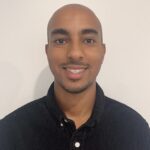



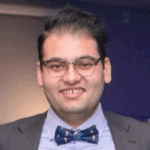
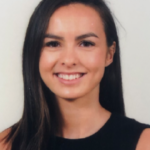


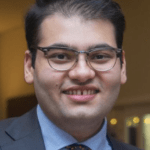

sponsored by

